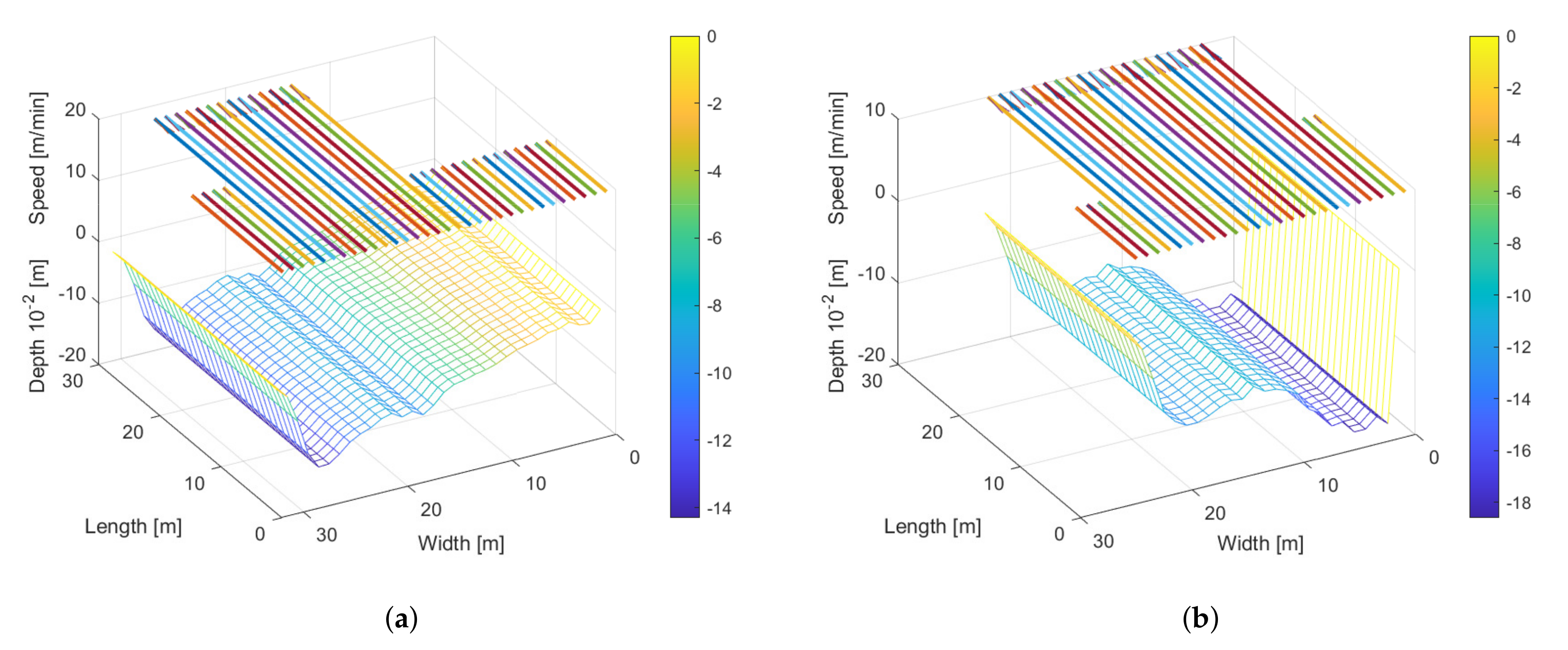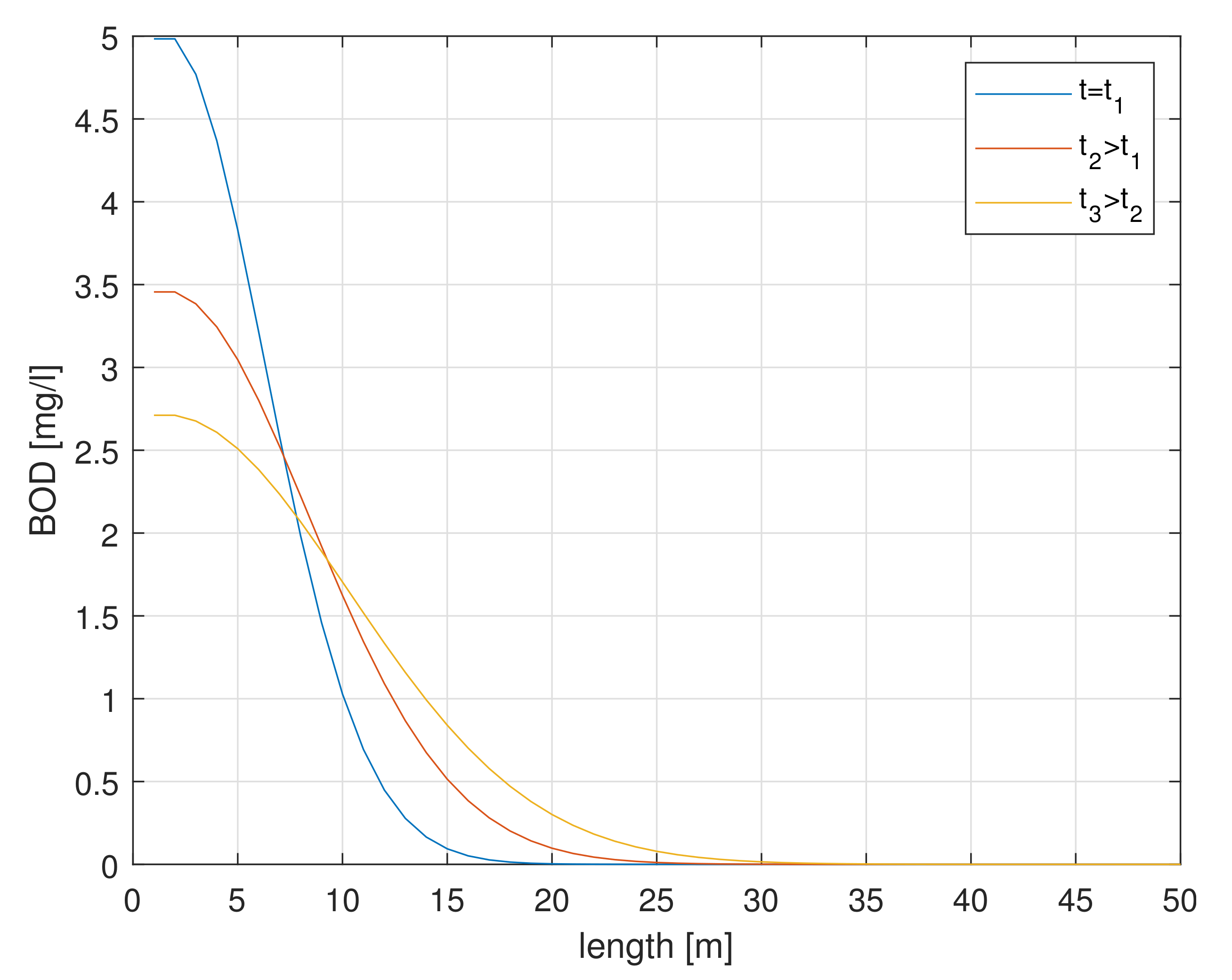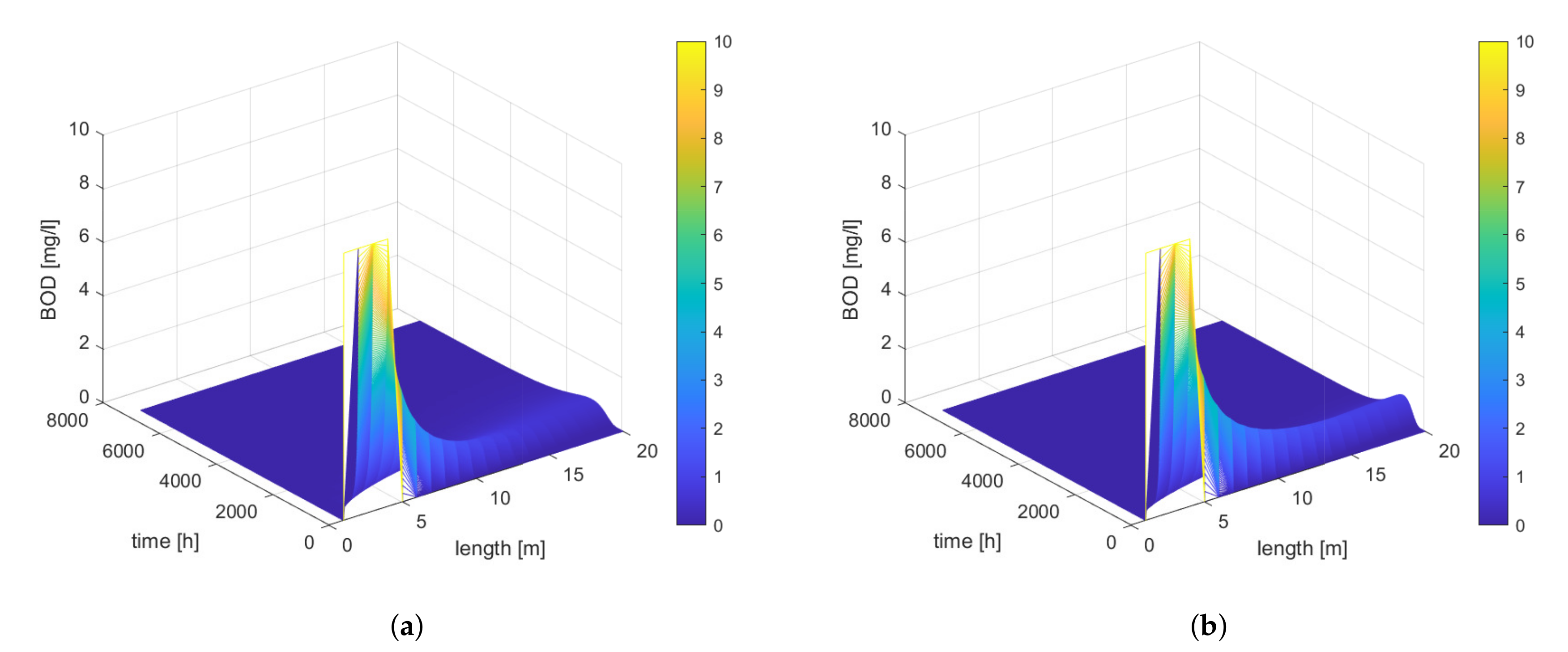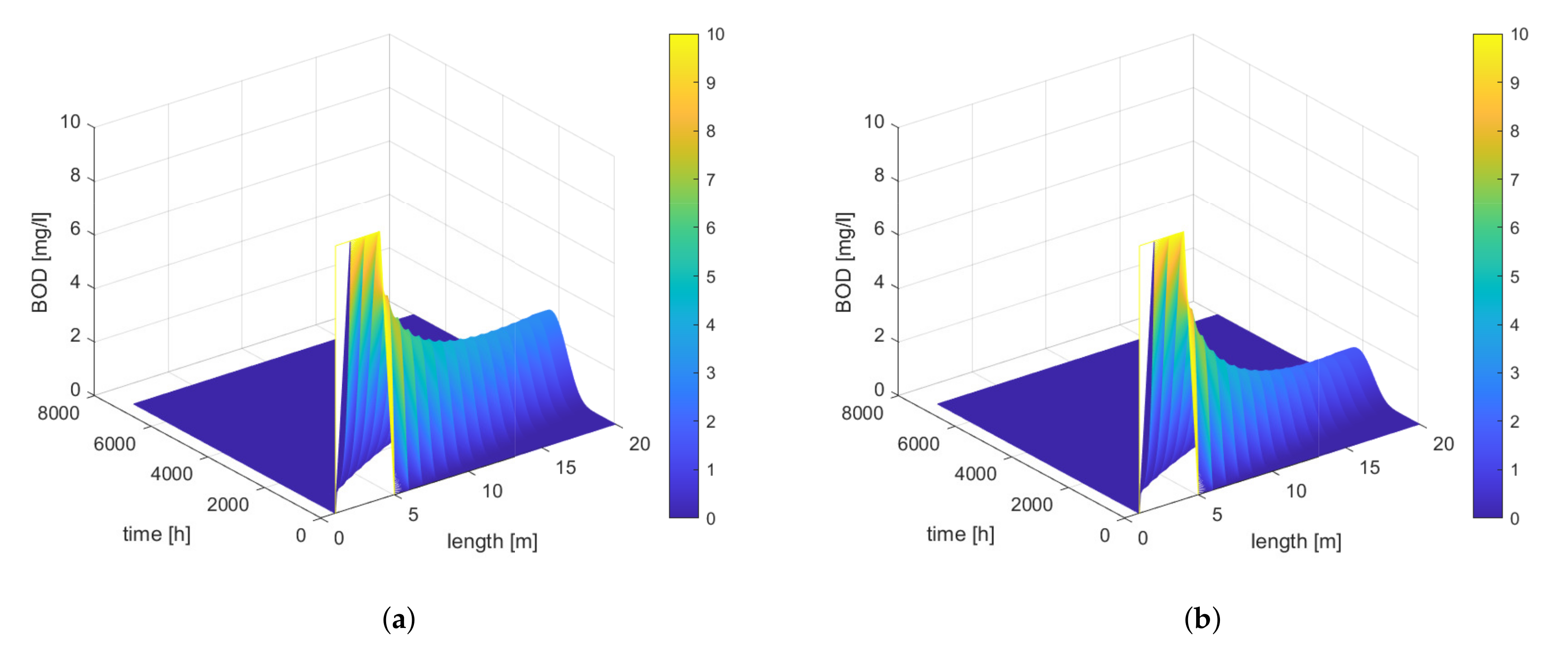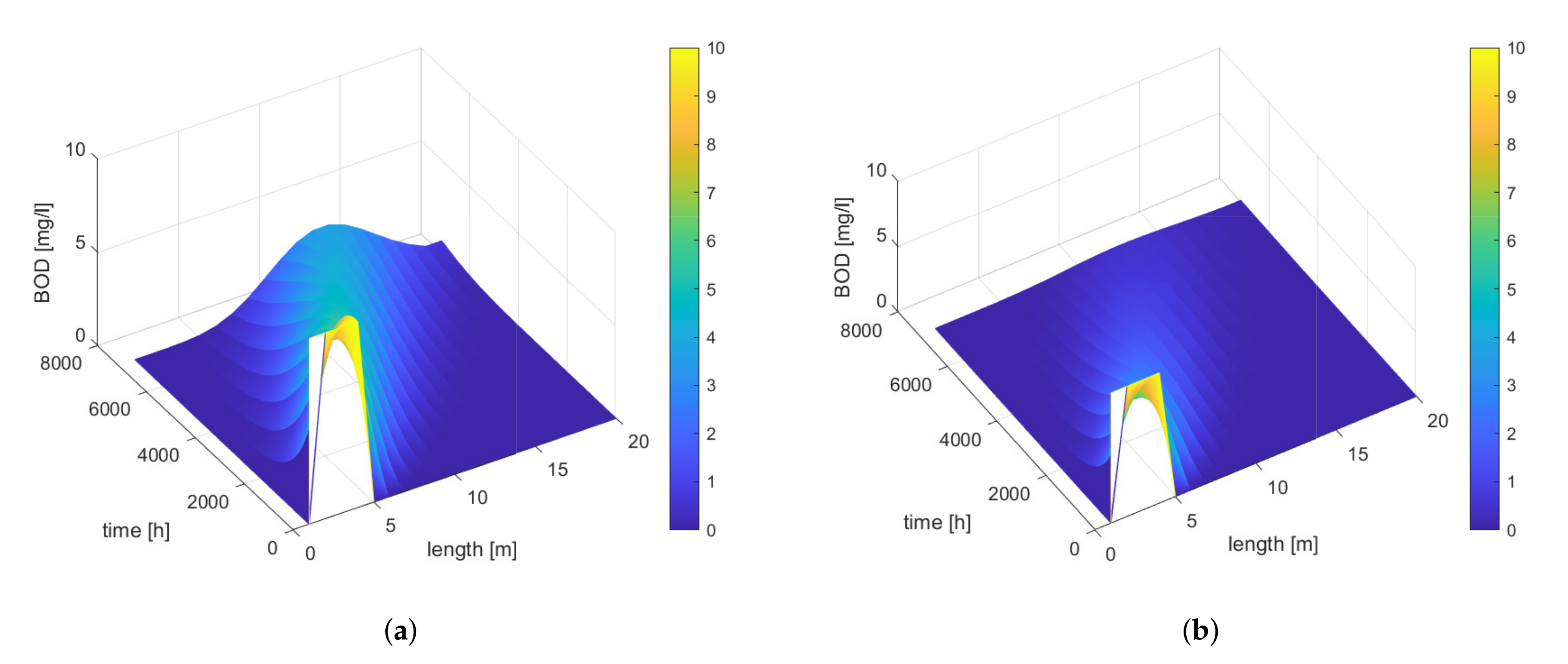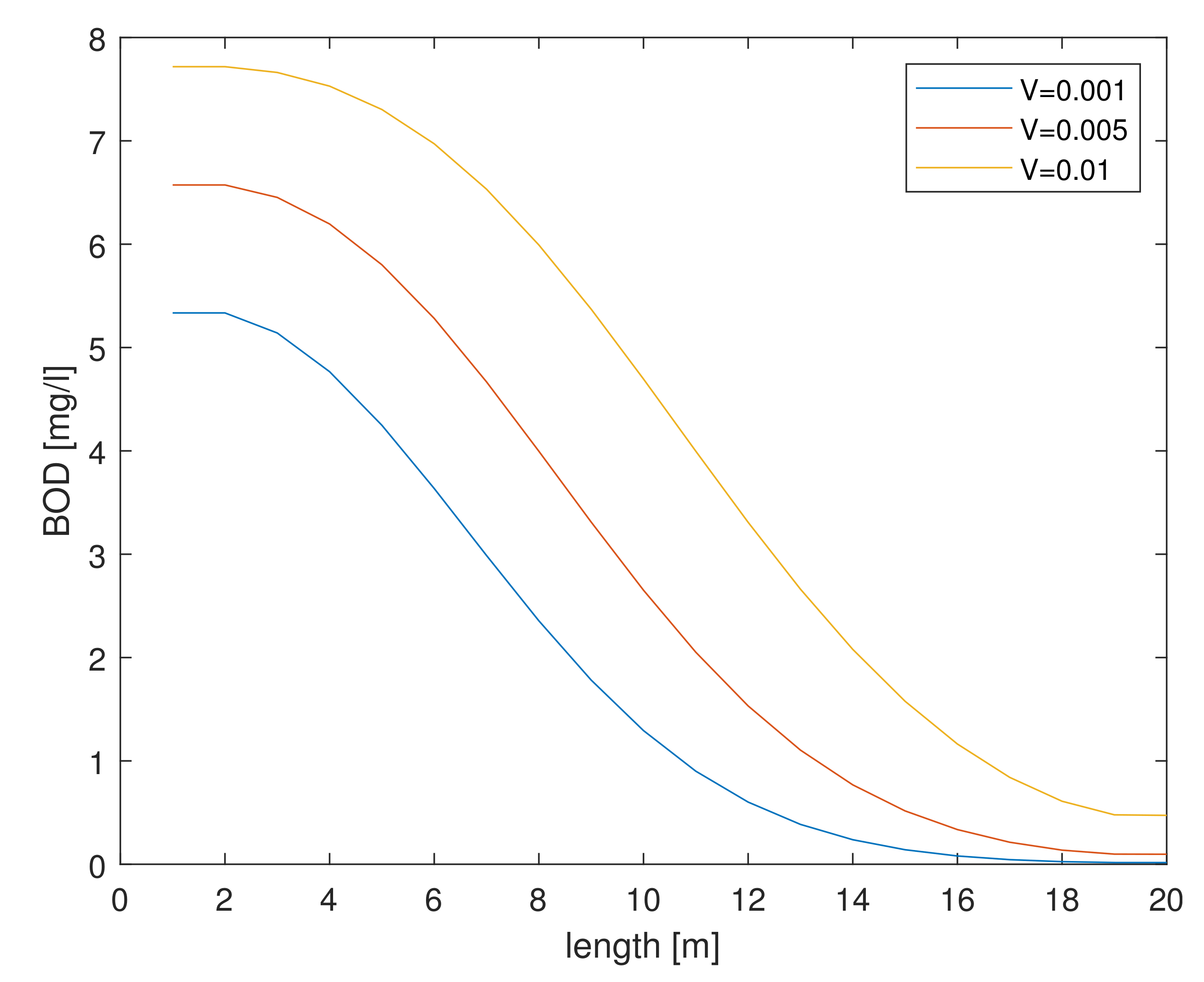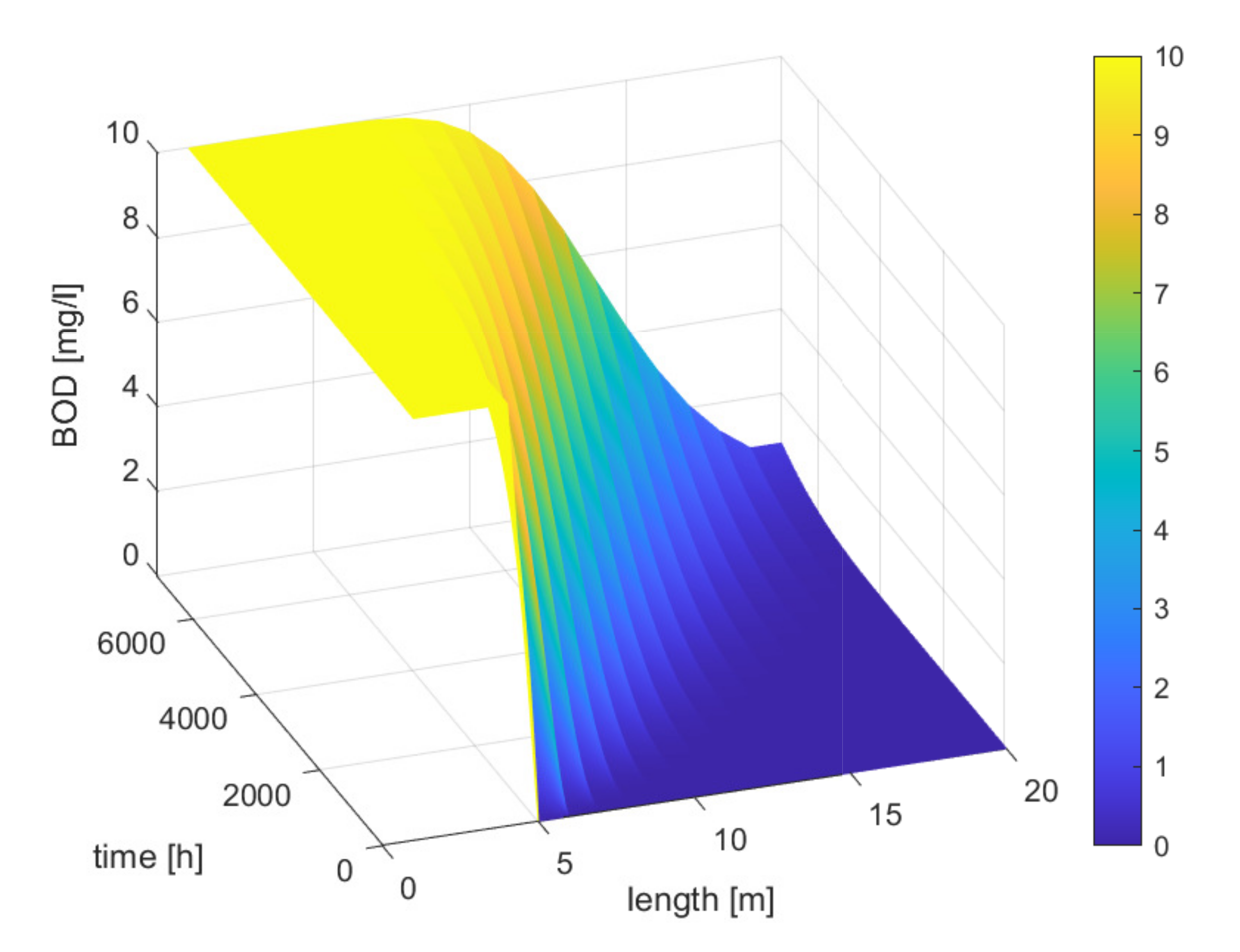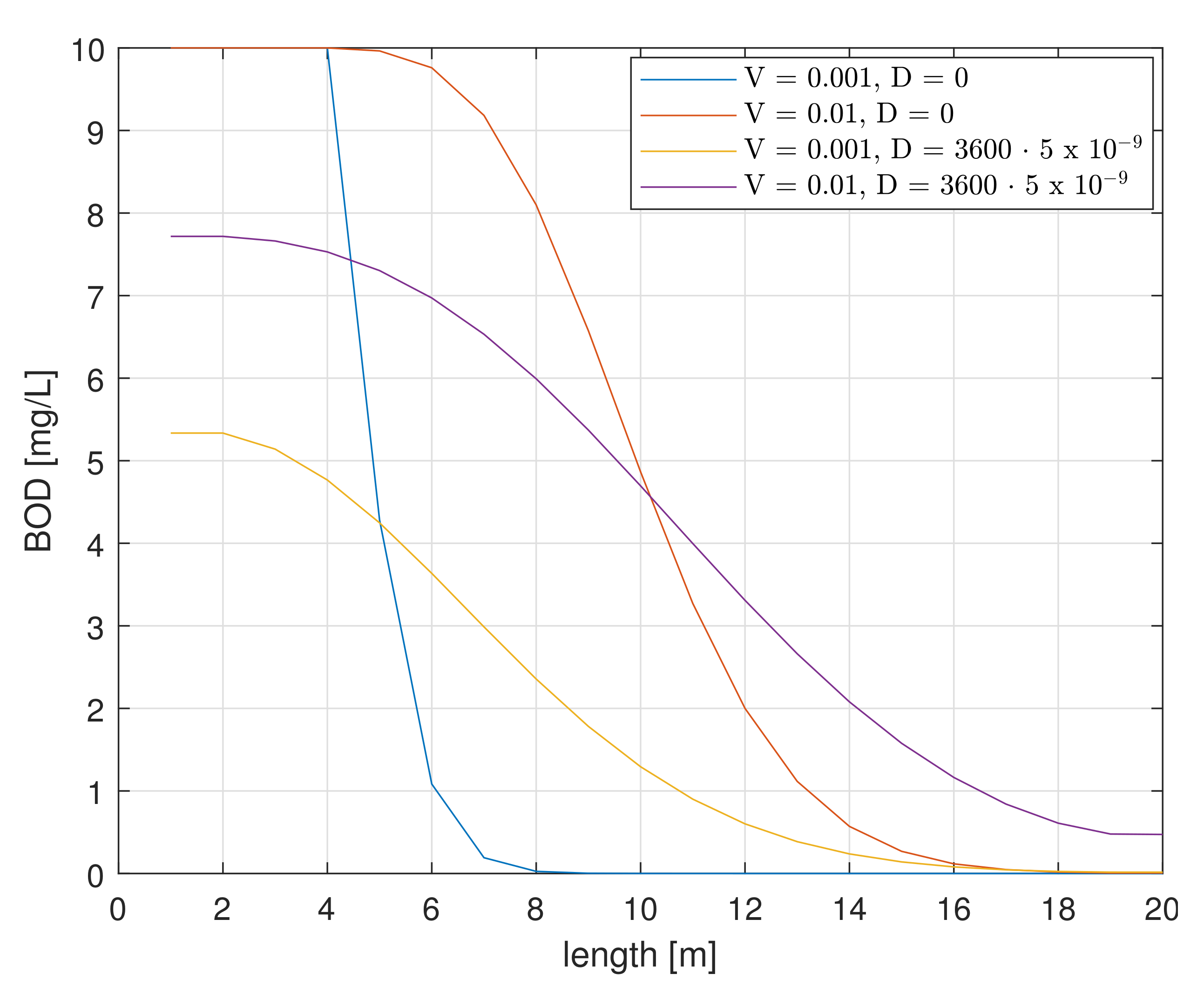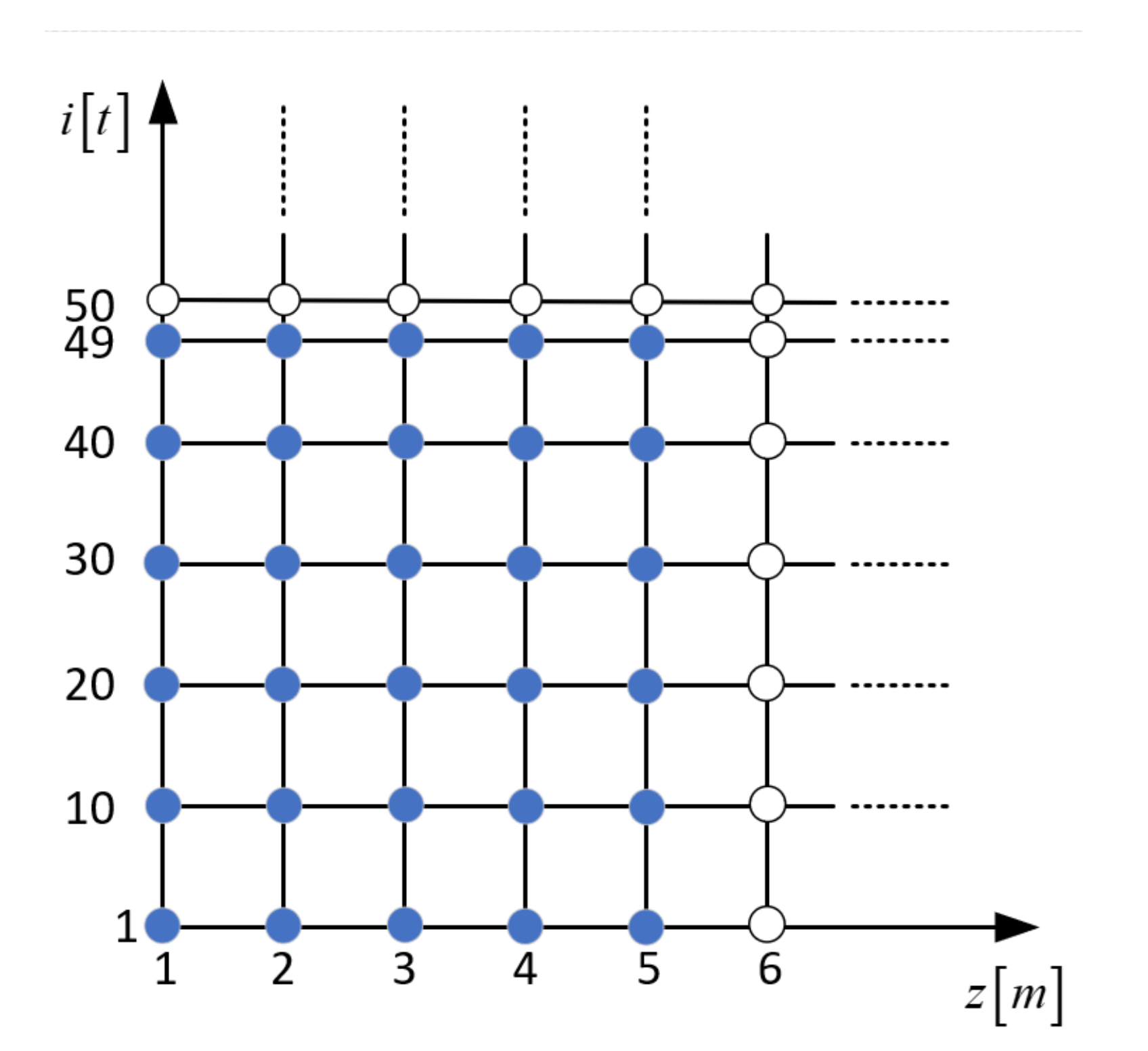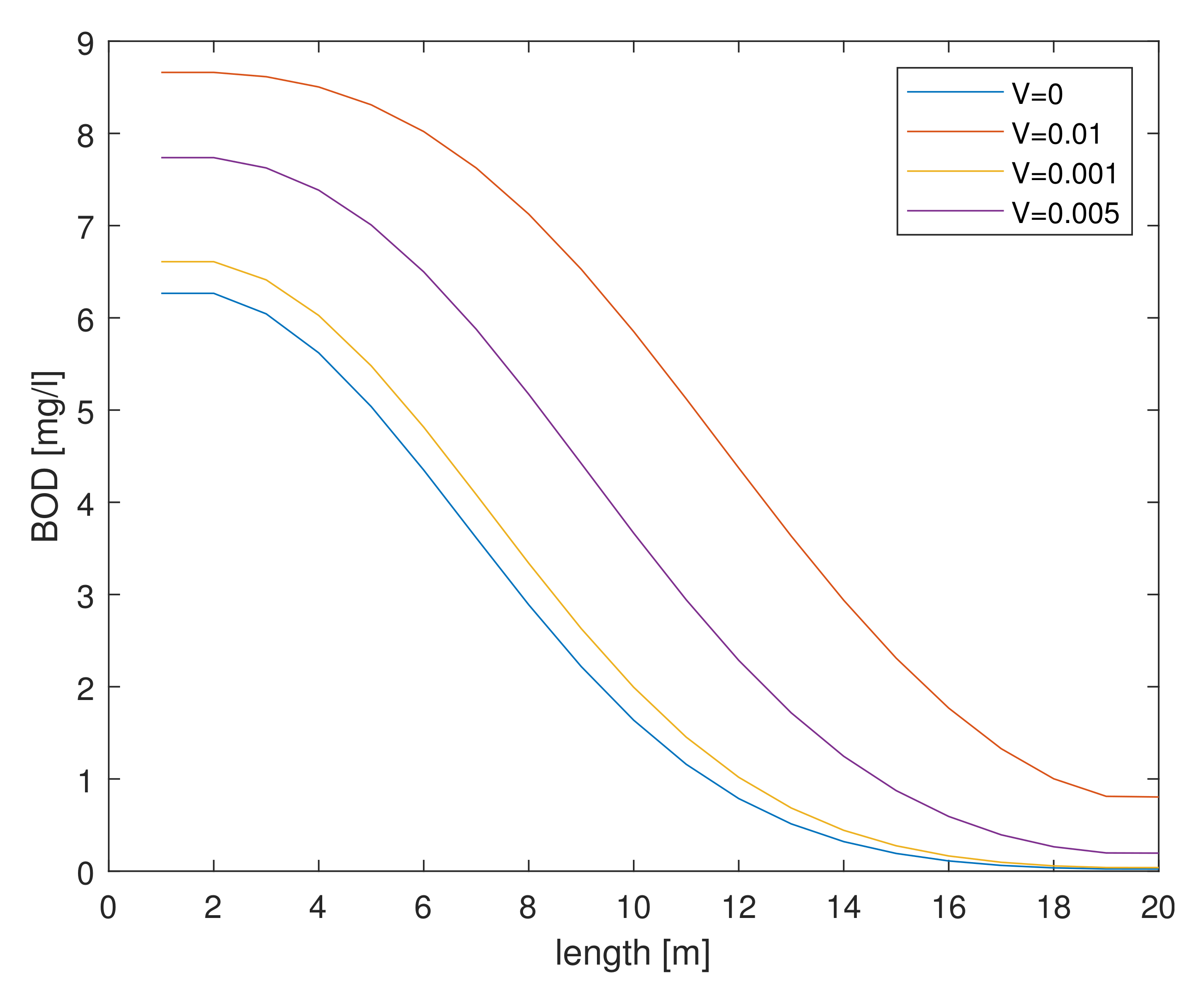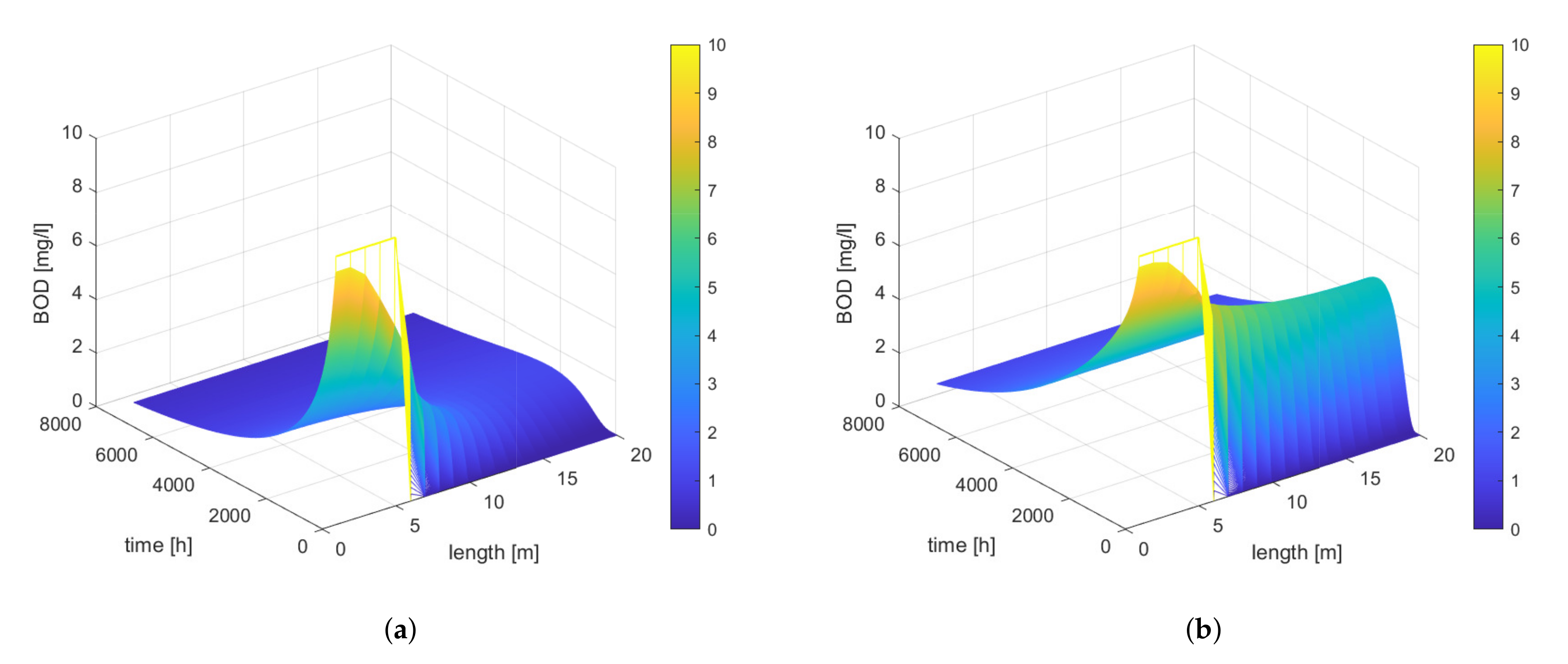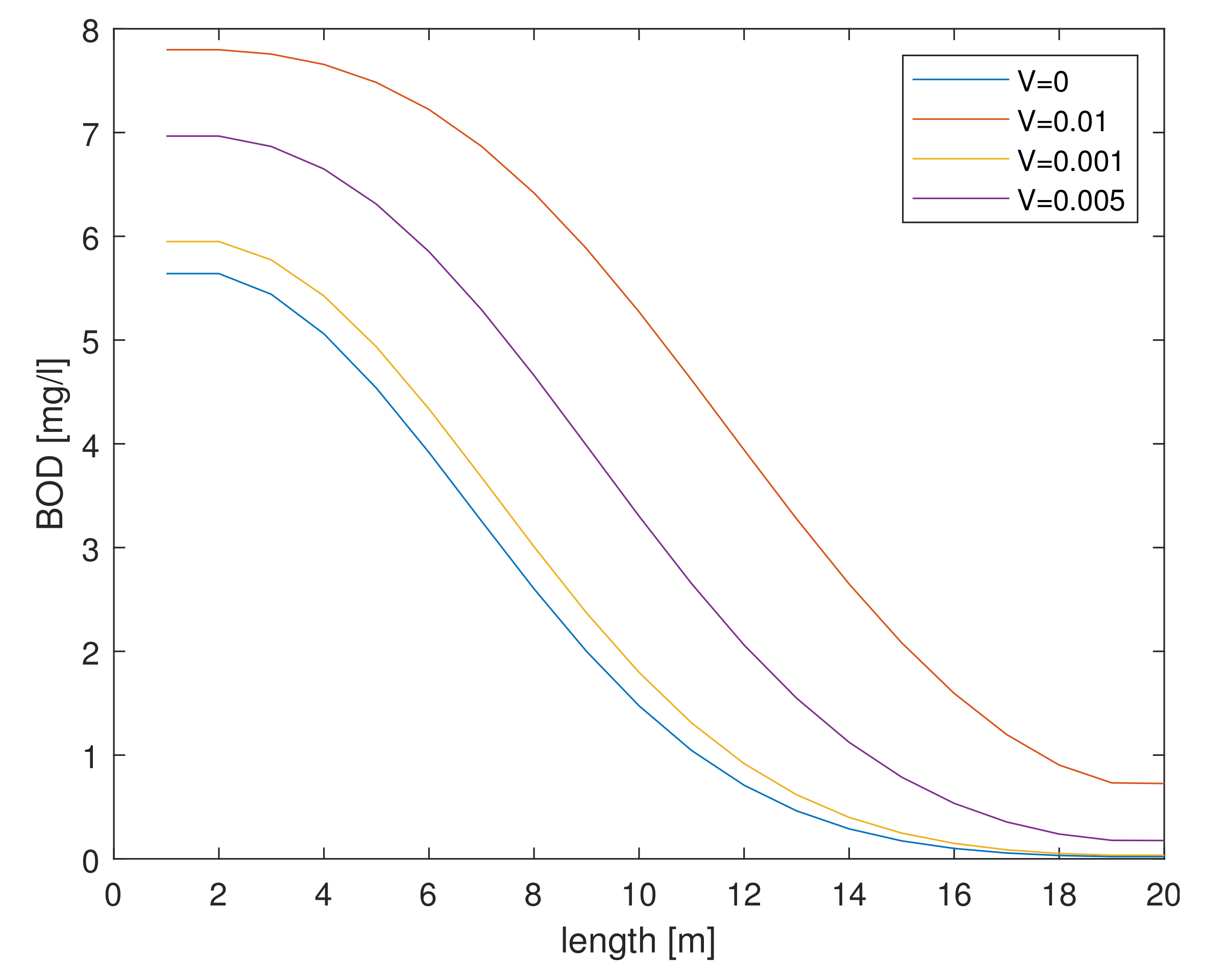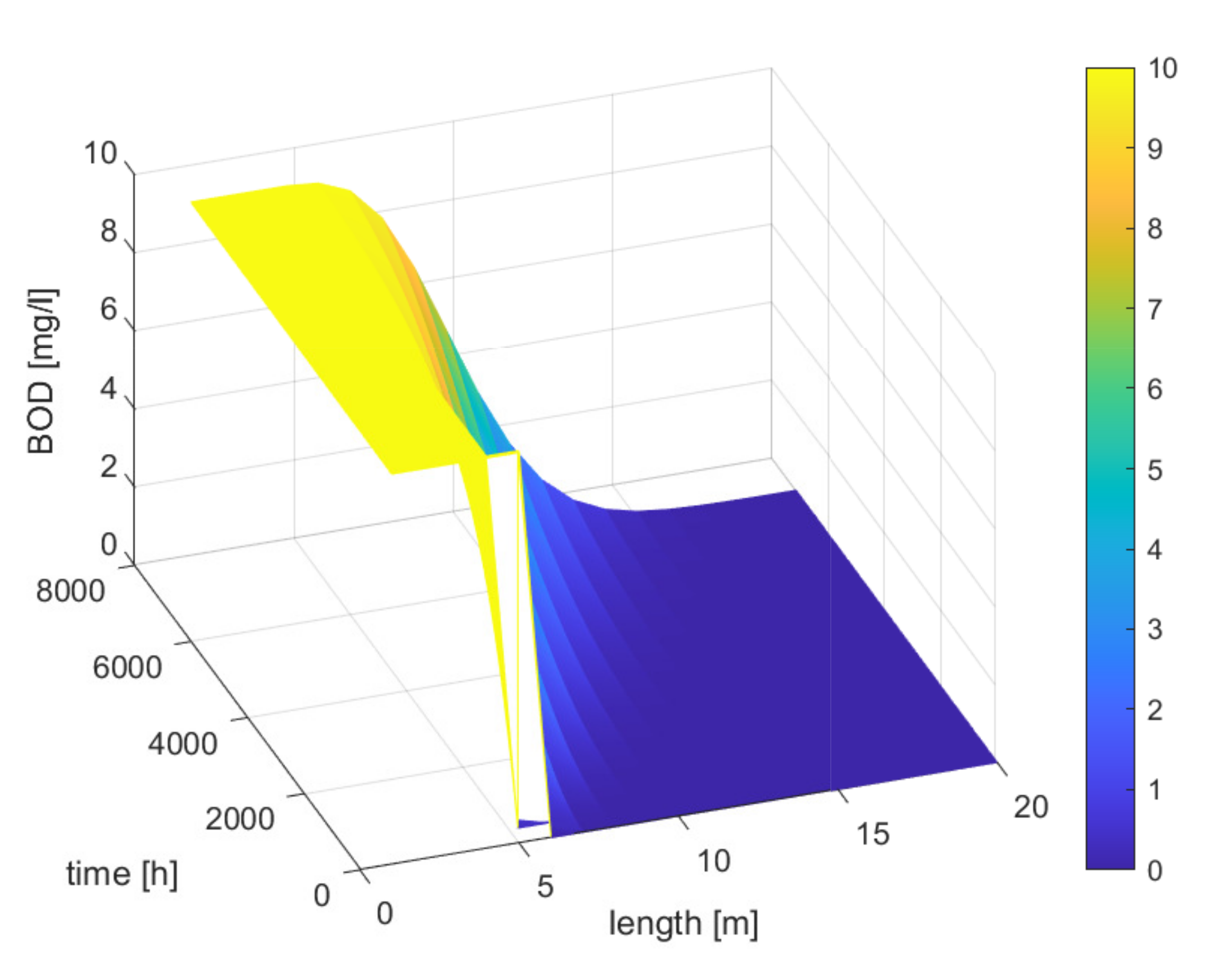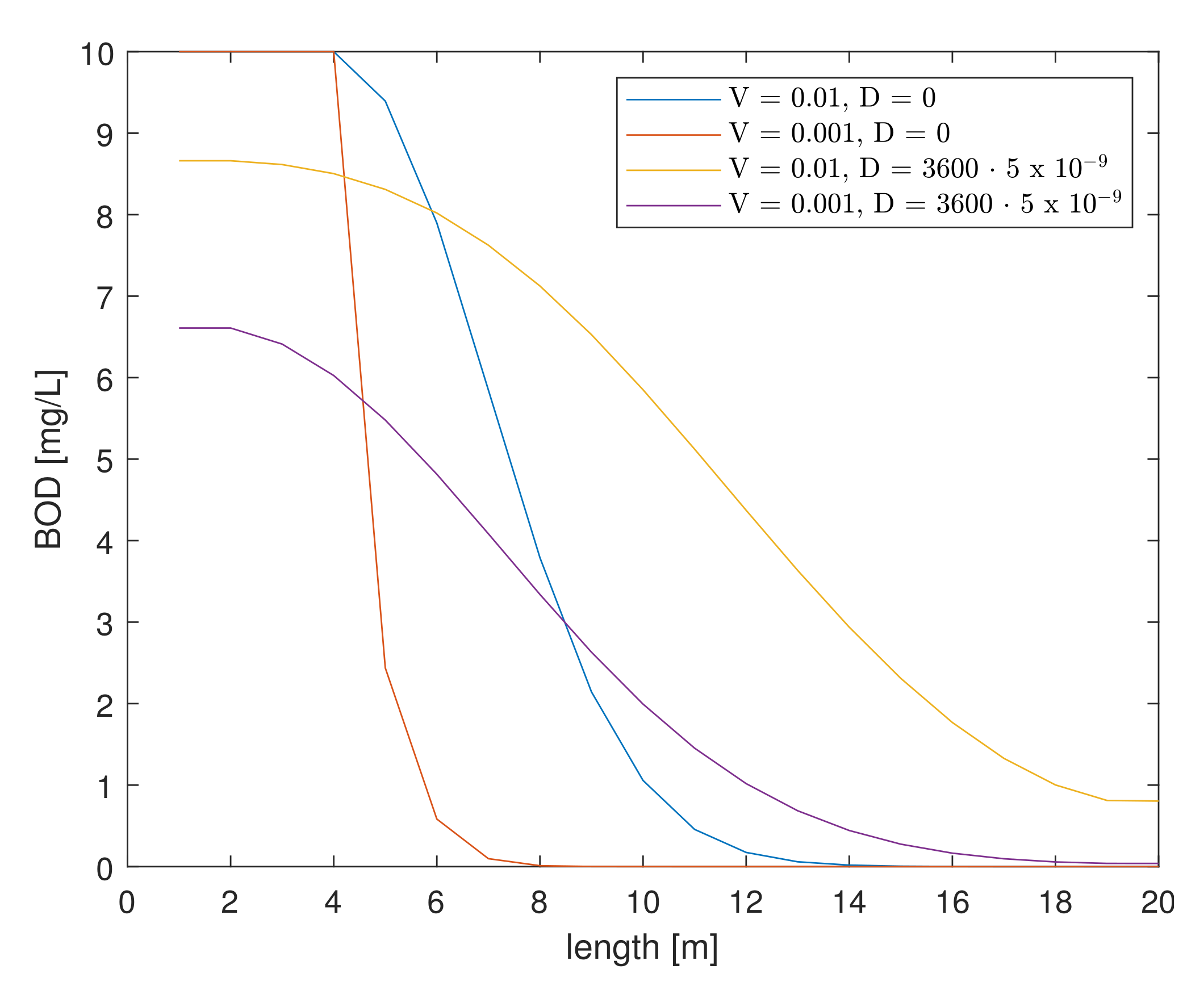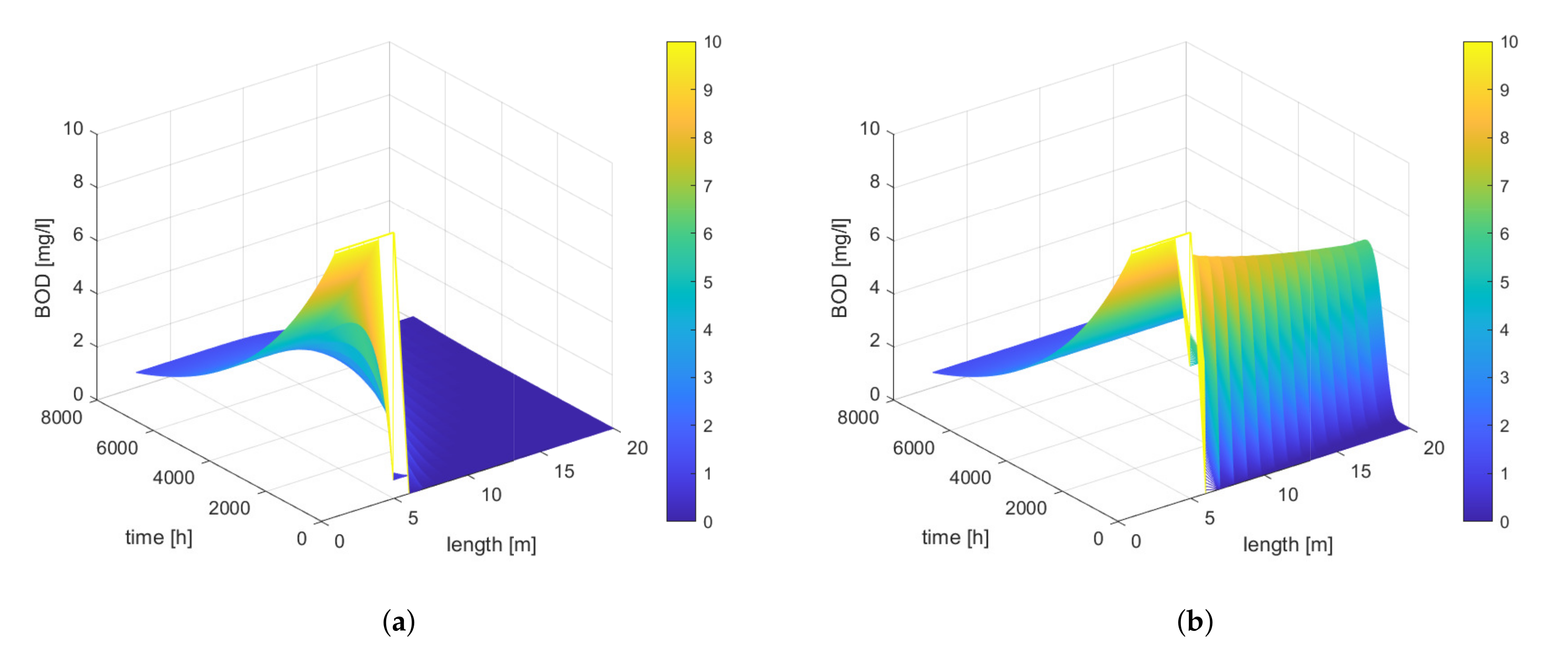1. Introduction
In the age of rapid change and rapid civilisational development, the terms ecology and environmental protection are becoming increasingly important. The environment influences man, and man also influences the place in which he lives, with the difference that our influence is often destructive. However, much of this inappropriate activity can be eliminated by adopting an environmentally friendly attitude. Amongst the many different factors that determine the level of civilisation is water. The requirements for water composition are continually increasing, which is why water purity tests are constantly conducted. This has resulted in the improvement and implementation of highly efficient and often unconventional manufacturing processes that protect the environment. Water is in constant motion, moving on land, in the atmosphere and in the oceans. Rivers play an important role; they form an integral part of water management and are a renewable source of fresh water. Due to the introduction of various biological and chemical substances into the environment, the quality of water has been changing [
1,
2]. Above all, we humans pose a very great threat to this precious resource.
Using mathematical modelling as a tool that can be applied in various areas of research, on modern engineering solutions [
3,
4], the authors designed an intelligent control and monitoring system for water quality status in rivers (
Figure 1). The use of the above system makes it possible to influence the improvement of water quality, thus preventing the appearance of undesirable water pollution conditions in a river, thereby augmenting the standard of living in the current threatened environmental world.
The system combines mathematical modelling and an extensively developed IT tool to monitor the state of water quality and influence its improvement when undesirable conditions arise. The intelligent monitoring and control system is the answer to the demands of Industry 5.0. Its various components, consisting of different types of sensors that monitor the state of water quality and telemetry stations that send real-time data to the intelligent module, enable the monitoring and the prevention of the spread of emerging poor water conditions. A detailed description of the system and the results of research carried out to date, in connection with the intelligent monitoring and control system, are presented in [
5,
6,
7]. The paper [
6] presents an approach which employs ANN (Artificial Neural Networks) for the real-time monitoring and control of water quality status. The paper [
5] presents a spatio-temporal method for analysing the state of river pollution, in the context of application in modern control and measurement systems, for predicting changes. On the other hand, the paper [
7] presents an adaptive algorithm to determine the value of the filter amplification factor, which allows for the avoidance of inconveniences, resulting from the need to estimate the characteristics of signals affecting the object under investigation. In this work, the mathematical models used did not make use of the phenomenon of diffusion which, under certain conditions of the river environment, significantly weakened the accuracy of the monitoring process.
Theoretical and experimental studies of diffusion in liquids are discussed by many authors in various scientific publications [
8,
9,
10]. The paper [
11] focuses on discussing the principles, applications and advances in diffusion, thermal diffusion and thermal conductivity in liquid systems. The presented experimental methods, for studying diffusion processes in liquids, systematise the theoretical interpretation of diffusion coefficients. In explaining the control of the specific gravity of an air–water mixture, the authors [
12] use the partial differential equation of convective diffusion at a constant state. The equation being considered contains diffusion and convection coefficients which are treated as control variables in the process of minimising the error evaluation function between the observed specific gravity and the solution of the control equation. In the study, discussed in the literature item [
13], the one-dimensional advection-diffusion equation with variable coefficients, was solved for three dispersion problems: (a) dissolved substance dispersion in steady flow through a heterogeneous medium, (b) time-dependent dissolved substance dispersion in homogeneous flow, through a homogeneous medium, and (c) dissolved substance dispersion along time-dependent flow, through a heterogeneous medium. The new independent variables are introduced through separate transformations, in terms of which the advection-diffusion equation in each problem is reduced to an equation with constant coefficients. By considering contaminants that are chemically inert and flow passively with the carrier fluid undergoing diffusion, the authors investigated the diffusion behaviour of a passive contaminant in a progressive wave field with strong turbulence using analytical methods [
14]. The focus is on nonlinear interactions between stochastic diffusion and deterministic wave-induced oscillatory advection. The scope of the study was limited to cases where there is a small parameter
between advective and diffusive displacements, which allowed the disturbance analysis to be conducted. The study [
15,
16] evaluated different definitions of the Péclet number for their ability to determine the relative importance of transport by advection and transport by diffusion, in low-permeability environments. It was identified that when deciding not to consider advection in low-permeability environments, the Péclet number, including the porosity available for diffusion, should be used instead of the effective porosity value.
In this paper, the authors present considerations on the influence of diffusion, in the process of modelling flow phenomena, which constitutes another intelligent module in the developed system for monitoring and controlling water quality status. Many elements introduced into the aquatic environment are passive and conservative; therefore, the most important processes influencing the spread and transport of these pollutants, i.e., advection and diffusion, are considered in the presented numerical experiments. This allows one to separate the dynamics of water flow and the dynamics of the transport of the dissolved substance mass.
3. Results and Discussion
The results of simulation studies for models that do not take into account the diffusion phenomenon are described in [
5,
6,
7]. The incentive for the experimental part of this paper is the attempt to test, in the form of simulation studies, the extended mathematical model which has been significantly extended in relation to the previously used simplified mathematical models of the river. The adopted experimental strategy includes sets of changing hydrological and biological parameters of the river, such as the velocity of the flow of water masses, the intensity of diffusion phenomena and the biological oxygen demand correlated with them. In this way, a comprehensive overview of the variability of the individual coordinates of the state of the process occurring in the river was created, in order to obtain an objective assessment of the accuracy of the monitoring of the ecological state of the river, which changes under their influence. These results are the starting point for the construction of an intelligent control module for the treatment process, taking diffusion under consideration. In view of the assumptions thus made based on the mathematical model of a polluted river described by Equations (
10) and (
13), a number of simulation studies were conducted, taking into account that measurements are made along the characteristics of free-flowing water. The mathematical model was verified for a legitimate subject, the Wislok river, covering the area of southeastern Poland. Field research was conducted on the local Wislok river, which is a hydrological object of significant importance for the Podkarpackie Province. The pollution load of the Wislok river depends on the level of development and industrialisation of individual fragments of its riverbed. Four measurement points were selected to reflect the nature of its flow in a specific way. The places where measurements were carried out are: Zarnowa (21.818889 E, 49.875556 N), Lutoryz (21.9093209 E, 49.9666064 N), Rzeszow (22.0115789 E, 50.0086266 N), and Smolarzyny (22.2924051 E, 50.1256537 N). In addition, selected measurement points are associated with the physical realisation of an intelligent monitoring and control system, using data transmission telemetry.
Figure 2 illustrates the cross-sections of the riverbed, including the velocities that occur at given river latitudes.
The research presented in this paper, on the mathematical model of the river taking into account the diffusion phenomenon, is based on Equation (
22) and is carried out only for the BOD coefficient. Consideration of the diffusion phenomenon is addressed, encompassing two spatial coordinates, which are time and the length of the river section. The simulation results are described in a two-dimensional area
z,
t for different values of
D,
V, and
A. A first interpretation of the problem is to consider the diffusion coefficient, assuming that the values
and
. The results obtained are shown in
Figure 3 and
Table 1 summarises the initial values used in the experiments.
Analysing
Figure 3, we can observe the appearance of pollution at the beginning of the river section under consideration. The BOD concentration decreases in the long term, which is caused by the spreading of the pollution centre. The consequence is the distribution of the concentration of pollution over a certain time and space. Here, we can see the influence of diffusion, where, after a certain period of observation, a decrease in its concentration and distribution can be seen. At different lengths, at different moments in time, the BOD concentration takes on a correspondingly different value, as demonstrated in
Figure 4. Depending on the time moment, at a given river length position, BOD concentration values vary. Respectively, at the moment of, e.g.,
,
,
the BOD value is within the limits of 5, 3.5 and 2.7 [mg/L].
Further consideration of the effect of diffusion, on the self-cleaning process, is to consider the situation when the inflowing water on the river banks is clean. This causes pollutants to be “entrained” by the river and to decompose along its entire length. Taking into account the phenomenon of diffusion at different river speeds, the spread of pollutants along the same stretch of river is different. The results of this process model, shown in
Figure 5 and
Table 2, summarise the values used in the experiments. At the initial moment, the value of the pollution was relatively high, but as time and length change, the pollution decreases and changes in length and time.
Further considerations included ignoring the phenomenon of diffusion, considering different velocities over the same length, and taking into account the self-cleaning process of the river. The simulation results are shown in
Figure 6, and the values used for the simulation are summarised in
Table 2. A significant effect of the self-cleaning process can be observed, which influences the faster distribution of pollutants over time and length.
An interesting situation arises at different river velocities. The velocity of the river causes the emerging pollutant to be “entrained” by the river and to decompose along its length (see
Figure 7 and
Table 3).
When diffusion is taken into account, the distribution of BOD is strongly influenced by velocity as shown successively in
Figure 8, and the values used for the simulations are summarised in
Table 4. A change in velocity results in a change in BOD concentration values, and a higher velocity results in higher BOD concentrations.
As the velocity increases over the same length of time, the value of the BOD concentration increases. Changes in the BOD concentration at different velocities in the initial time moments are shown in
Figure 9.
An interesting phenomenon occurs when diffusion is not considered, as shown in
Figure 10 (cf.
Figure 8a). Once a pollutant is introduced into the water, the lack of diffusion results in a prolonged period of dangerous conditions in the river, only after the water masses have moved over a certain length and time does the concentration of the pollutant degrade.
The effect of velocity when diffusion is included and omitted at different velocities is shown in
Figure 11. Excluding diffusion after the introduction of a pollutant, the pollutant concentration is higher than when diffusion is allowed for, which results in a faster decomposition of BOD.
Considerations to date have focused on the introduction of pollutants into the river without prolonged perseverance. Another consideration concerns the prolonged stamina of the introduced contaminant for a fixed time, over a given length. This phenomenon can be represented by a grid (
Figure 12), which illustrates the persistence of a pollutant at a certain time along a given length, depending on the parameters adopted.
The figure above illustrates the range over which pollution is maintained. The blue dots indicate the tenacity of the pollution over a given length at relevant moments in time, while the white dots are the beginning of the spread of the pollution. The simulation results are shown in
Figure 13, and
Table 5 summarises the values used.
It is evident that the initial pollution introduced into the water persists over a long period of time at an appropriate length (cf.
Figure 8a,b). In the initial moments of time at a given length, the BOD concentration is high, after which it spreads accordingly over the given area. Depending on the speed of the river, the distribution of pollutants in the river at the same moments of time, along the same length, is different: see
Figure 14.
The above considerations concerned the distribution of BOD taking into account the phenomenon of diffusion and disregarding the self-cleaning process of the river. The effect of the self-cleaning process of the river, at different velocities, is shown in
Figure 15, and
Table 5 summarises the values used for the study. It can be seen that the self-cleaning of the river influences the BOD distribution, resulting in a shorter occurrence of high concentrations of pollutants in a given section of the river.
Figure 16 illustrates the changes in BOD concentration as a function of speed, taking into account the self-cleaning processes. Comparing
Figure 14 and
Figure 16, the influence of the river’s self-cleaning, on the distribution of pollutants in the section under consideration, can be clearly seen. At the same moments in time, respectively, at the same water mass flow rates, the BOD concentration values are different. The self-cleaning of the river accelerates the breakdown of pollutants, so that the river returns to a clean state more quickly. The value of the concentration at the same moment in time taking into account the self-cleaning process at a rate of
is
(see
Figure 16), without taking into account self-cleaning of the river the value is higher and takes the value of
. The detailed BOD values are summarised in
Table 6.
A different approach to analysis of changes in BOD distribution is shown in
Figure 17. The flow rate of the river was taken into account here, but the occurrence of diffusion and the self-cleaning process were neglected. We observe here what was introduced of a tenacious pollutant, introduced over a period of time excluding the diffusion phenomenon leads to prolonged dangerous conditions in the river. Only after a certain time and length does the spread of contamination occur.
In this situation, the key influence on the distribution of pollutants is the velocity of water movement and the diffusion occurring within them.
Figure 18 shows the distribution of BOD pollutants at different velocities, excluding and including the diffusion mechanism. The omission of diffusion when maintaining the introduced pollutant for an appropriate time results in a state of prolonged hazardous conditions in the river, while the action of diffusion results in the faster dispersement of the introduced pollutant.
Comparing
Figure 11 and
Figure 18, we can observe the dynamics of the changes in BOD concentration, which is affected by the persistence of the pollutant for a given moment. During the persistence of the introduced pollutant in the water, the value of BOD concentration at the same velocities is higher. A constant flow of pollutants results in higher concentrations. A summary of the values obtained is shown in
Table 7.
Figure 19 shows the effect of velocity on the distribution of pollutants with and without diffusion and self-cleaning, respectively. It can be seen here that at higher velocities of flowing water the distribution of pollutants, including and excluding diffusion effect, takes on similar values. At lower velocities (see
Figure 18), it can be seen that the diffusion phenomenon has a strong influence on the distribution of pollutants.
The omission of the diffusion phenomenon regarding the self-cleaning process and different river velocities is shown in
Figure 20. Higher water flow velocity causes the introduced pollutants to be “carried away” by the river resulting in a distribution along the entire length of the river.
Conducting simulation experiments without considering diffusion at different velocities with respect to the self-cleaning process, it can be seen that BOD concentration values are high, within the persistence of the pollution, for a long while, and then, they decrease with time and length (
Figure 21).
On the basis of the research conducted thus far, on simulation experiments of mathematical models of biochemically polluted water, taking into account the diffusion phenomenon and the influence of individual parameter values on the distribution of pollutants, it can be assumed that at relatively high water flow velocities, the influence of the diffusion phenomenon can be neglected. In objects where the self-purification process is carried out at lower speeds, a large influence of diffusion on the distribution of pollutants was observed, and this phenomenon should be considered in a mathematical model as well as in the algorithmic structure of intelligent module that controls and monitors the quality of water in the river.
4. Conclusions
The paper presents studies on numerical simulations of mathematical models of biochemical water pollutants, for various degrees of model complexity, including the phenomenon of diffusion. The studies analysed phenomena occurring in relation to spatial, time coordinates and variable parameter values in the models. Detailed consideration was given to the biochemical contamination of water, taking into account the phenomenon of diffusion. The experiments conducted concerned the dynamics of the diffusion phenomenon, along the entire length and width of the section of the river under consideration, following a smoothly varying timeline. In fact, the depth of the Wislok is very shallow compared to other dimensions of the river, which resulted in the omission of this parameter. Minimizing the negative effects of serious environmental pollutants is possible, thanks to online monitoring and control systems. As part of the work on the system for monitoring and controlling water quality in rivers, a number of field and laboratory tests were conducted on the Wislok river, which is a river of significant importance for the Podkarpackie voivodeship. The tests were organised at four measuring points: Strzyzow, Zarzecze, Rzeszow and Bialobrzegi. The scope of the field study included the determination of water temperature, measurement of river current velocity, river bed shape and water flow. By contrast, laboratory tests focused on the determination of dissolved oxygen. While designing the presented solution, a mathematical model of a physical object was used, which was a section of a river understood as a certain mathematical abstraction binding together variables characterizing the state of the object, interaction of external signals thereon and its reaction. The pollution load on, the waters of the Wislok, depends on the level of development and industrialization of the catchment area. The pollution level increases after the receipt of municipal and industrial wastewater from various wastewater treatment plants and discharges of municipal and industrial wastewater located along the river. The proposed solution allows real systems to be efficiently designed for river state estimation control. This is important for the control of such objects, particularly, where measurements of certain state vector coordinates require lengthy laboratory service. Currently available technical means and numerical methods allow for the adaptation tasks to be carried out, in a short period of time, with unknown interference characteristics.

